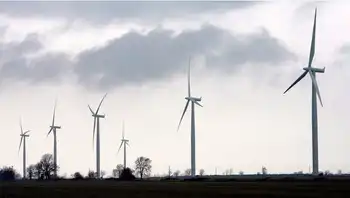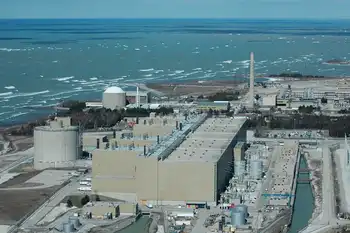New energy crisis, new investments
- "Green" investing was once dismissed as a hobby of the granola and sandals set.
But it's gone pinstripes in recent years as the rise of a sustainable goods consumer sector has broadened the sector. Japan's nuclear debacle and Middle East uprisings have added more urgency for investors looking to "clean up" their portfolios.
Big oil and nuclear were back in favor in the post-financial crisis. But new money flowed into the alternative energy sector in the first quarter of the year for the first time since 2009. Some of it was 'crisis investing' — though some was triggered by President Barack Obama's plan to cut oil imports by a third over 10 years.
The rise of oil prices played a key role once again, for when oil surges to its highs, alternative energy stocks benefit. But this time, investors are finding a growing number of green vehicles in food and agriculture, recycling, health care, water companies and even railroads.
This time, the rise in the sector may be more sustainable and less energy-dependent, say the fund managers, who say that do-gooders often make good money by paying attention to environmental impacts.
"We are not a non-profit," says Jack Robinson, 68, portfolio manager for the Boston-based Winslow Green Growth Fund. "Our clients and shareholders want to make money but prefer to make their money consistent with their values."
"Our funds are as dark green as you can get," says the portfolio manager for Winslow Management, a division of Brown Advisory, which has $20 billion in assets under management.
Robinson, who has been "green investing" since 1983, does not believe you have to sacrifice returns by using a green lens to find stocks. It helps that most of them tend to be growth companies, he says.
Winslow likes well-run companies where management has a vested interest alongside the shareholders, with little or no debt, strong business models and good products. He says these companies have no problem financing growth through equity.
The Winslow Green Growth Fund, up 4.9 percent this year, seeks long-term capital growth. Although they can invest in any size company, they tend toward domestic small-cap companies. The fund has lagged the Russell 2000 growth index, which is up 6.5 percent year to date.
Though not every stock is up, among their top holdings are First Solar Inc., up 10.4 percent in 2011, Green Mountain Coffee Roasters Inc., up 103.4 percent and Whole Foods Market Inc., up 24.3 percent.
Green Mountain's big jump came after it announced a deal with Starbucks Corp, to join forces in the $4 billion U.S. single-serve coffee market. Whole Foods has long been the favorite store of green shoppers.
In the 70s screening for stocks involved mostly what not to buy — tobacco, armaments, anti-union policies or nuclear. Fund managers in the sector have shifted more toward picking from the 1,000-plus green companies both domestically and internationally, Robinson says.
Old-line industrial companies such as railroads make the grade because they take trucks off the road, reducing transport costs and pollution.
His pick in the space, is Wabtec Corp, which makes parts for locomotives, freight cars and passenger transit vehicles. The stock is up 26.4 percent this year to date.
But the green space can be volatile as Robinson knows.
The Winslow Green Growth Fund was four percentage points ahead of the Russell 2000 growth a week ago but their position in American Superconductor, a turbine parts maker, prompted a sharp drop in performance.
Sinovel, China's top wind turbine maker, which accounts for nearly three quarters of American Superconductor's revenue, refused to accept shipments and the stock tanked. American Superconductor was down 13 percent in 2011 before the announcement but is now down 54.7 percent.
But their focus is also on sustainable and responsible investing SRI, an investment strategy that integrates social and environmental criteria into financial analysis.
"We have a variety of products to bring people in," said Paul Hilton, 39, director, sustainable investment business strategy at Calvert Asset Management Company, Inc. in Bethesda, Maryland, which oversees $14.8 billion. "Some are pure, some are advocacy. What we have to do is be competitive with any traditional investment product."
More pure plays include the Calvert Global Alternative Energy Fund, up 8.9 percent, and the Calvert Global Water Fund, up 0.8 percent year to date, according to Reuters data. Those funds include names possibly unfamiliar to the average investor such as Iberdrola Renovables SA and First Solar Inc. in the energy fund and Veolia Environnement and Suez Environment Co in the water space.
But the group also offers the Calvert Equity Portfolio up 7.8 percent year to date compared to its benchmark the Standard & Poor's 500 index, up 6.6 percent in 2011.
That fund includes familiar names such as Apple Inc., Netflix Inc and Suncor Energy Inc. and seeks growth of capital through investment in companies whose stock should appreciate while meeting the fund's financial, sustainability and social responsibility investment criteria.
While the United States fell to third place in clean-energy investment last year, after China and Germany, as the lack of a national energy policy hurt wind and solar power and other technologies, according to a report by the independent Pew Charitable Trusts, opportunities still abound locally.
General Electric Co., the largest U.S. conglomerate and major producer of wind- and gas-powered electric turbines, aims to have its new $600 million U.S. solar panel plant up and running by 2013.
But Frank Morris, founder of New York-based EcologicAdvisors, portfolio management for environmental investors, said he wouldn't buy GE.
Though recent investments have been large, he does not see the company making a real commitment.
"There is too much money invested in the other side," Morris says.
Renewables are just a slice of GE's $37.5 billion energy unit, which also makes coal-burning power plants and nuclear reactors, including the design used at Japan's quake-hit Fukushima power plant that is the site of the world's worst nuclear crisis since Chernobyl.
"In terms of scale, First Solar is still well ahead of them, but obviously GE has very deep pockets," says Adam Krop, solar analyst with Ardour Capital Investments in New York.
GE stock is up 9.6 percent in 2011.
EcologicAdvisors' Morris also takes a traditional investment approach but considers what a "post carbon, less extractive, modern infrastructure will look like on a planet trending toward 9 billion people over the next 30 years."
Morris sees potential in stocks such as Zoltek Cos., a maker of high tech carbon fiber for wind turbines, up 9.8 percent in 2011 and SunPower Corp., a solar products and services company, up 28.7 percent, as well being a fan of First Solar and Green Mountain.
One popular myth is that alternate energy stocks gain as oil prices rise.
But Winslow's Robinson disagrees.
While that was historically true, Robinson says it has become less so as the cost of renewable electricity, excluding nuclear, has steadily come down and the stocks are more independent of oil price moves.
But Barack Obama outlined his oil strategy after spending days explaining the U.S.-led military action in Libya, where fighting, accompanied by unrest elsewhere in the Arab world, has helped push U.S. gasoline prices toward $4 a gallon.
And even if the alternative stocks don't benefit immediately, it does prompt more investors to think about the possibilities.
Related News

A Texas-Sized Gas-for-Electricity Swap
DALLAS - What would happen if you converted all the single-family homes in Texas from natural gas to electric heating?
According to a paper from Pecan Street, an Austin-based energy research organization, the transition would reduce climate-warming pollution, save Texas households up to $452 annually on their utility bills, and flip the state from a summer-peaking to a winter-peaking system. And that winter peak would be “nothing the grid couldn’t evolve to handle,” according to co-author Joshua Rhodes.
The report stems from the reality that buildings must be part of any comprehensive climate action plan.
“If we do want to decarbonize, eventually we…




